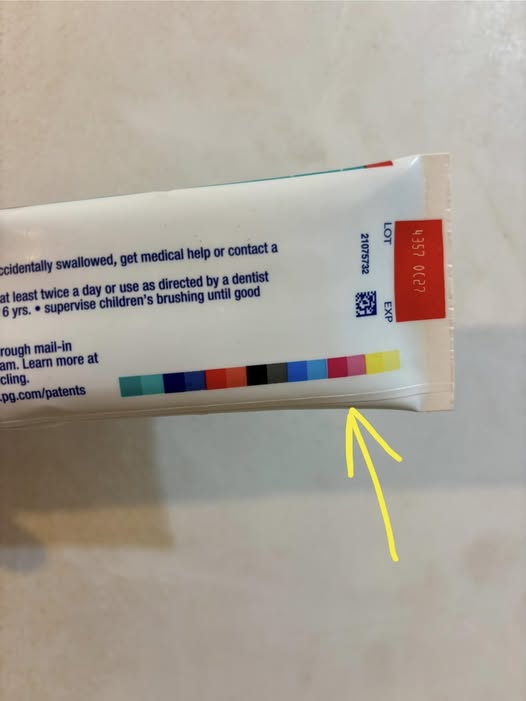Chemicals in personal care products
Transparency in labeling
Hidden ingredients
People wanted a simple way to “read between the lines” — and the colored squares seemed like a perfect clue.
But here’s the catch:
The same colors appear on all types of toothpaste — natural, conventional, medicated, and whitening formulas — regardless of their ingredients.
A green mark doesn’t mean the toothpaste is organic — it just means the printer used a green guide.
Fun Fact: The Color Doesn’t Matter
The color of the mark (green, red, blue, etc.) is completely arbitrary.
Contrast with the background (so sensors can detect them)
Ink availability
Design layout
There’s no standard, no code, and no industry-wide meaning.
Some brands use two marks — one for the front, one for the back — to align both sides of the tube.
How to Actually Know What’s in Your Toothpaste
If you want to understand what’s inside your toothpaste, skip the colored squares and check:
Fluoride is safe and effective for preventing cavities (unless you have a rare sensitivity)
“Natural” doesn’t always mean safer
Always consult your dentist if you’re unsure about a product
Final Thoughts: Sometimes, It’s Just Packaging
The colored squares on your toothpaste tube aren’t a secret.
They’re not a conspiracy.
They’re not a code.
They’re just part of the printing process — a behind-the-scenes detail that ensures your toothpaste tube looks clean, professional, and perfectly printed.
So the next time you see that little green or red box,
Don’t overthink it.
It’s not telling you about chemicals.
It’s just helping the machine do its job.
And as for what’s really in your toothpaste?
Read the label — not the myth.
The truth is simpler than the rumor — and that’s a good thing.
ADVERTISEMENT

